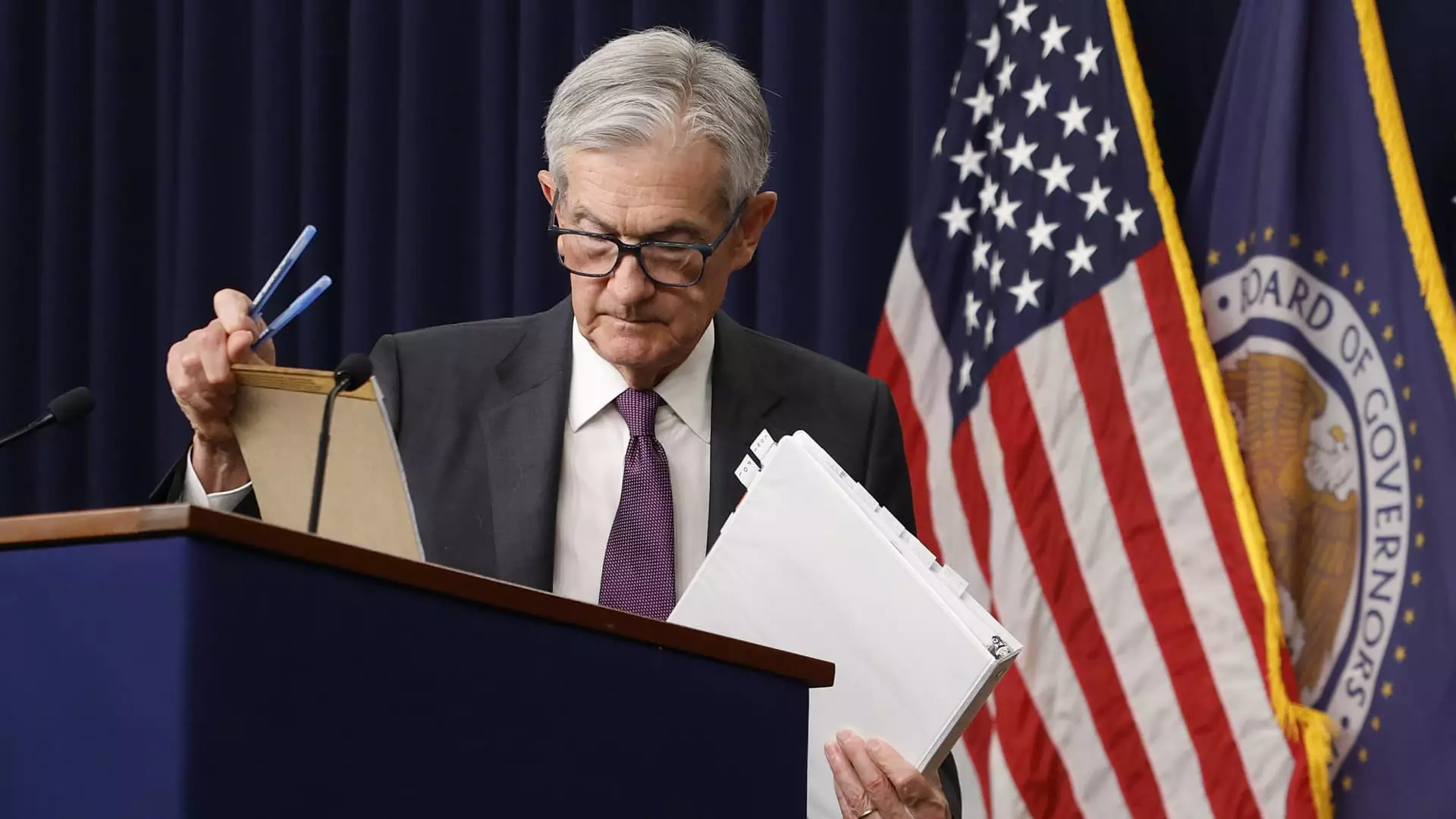Jerome Powell, current Chair of the Federal Reserve, recently delivered a speech that sent ripples across both financial markets and everyday Americans. He conveyed a serious contemplation regarding the Fed’s dual mandate: the need to sustain full employment while maintaining stable prices. With the backdrop of President Donald Trump’s tariffs looming large over the economy, Powell articulated a concern that places the Federal Reserve in a precarious position. There’s a growing tension between striving for healthy economic expansion and warding off the specter of inflation—an adversary that has historically wreaked havoc on purchasing power.
What is striking here is the admission of conflict within the Federal Reserve’s core mission. Powell’s candid acknowledgment of a potential struggle between these two objectives is not just a financial statistic; it’s a grim acknowledgment that the tools traditionally used may be ineffective under current conditions. The idea that the Fed may find itself unable to meet both mandates simultaneously is alarming, leading to questions about the institution’s effectiveness in managing the economy’s course.
The Tangible Impact of Tariffs
The crux of Powell’s discourse revolves around tariffs as a mechanism that muddles the economic landscape. Tariffs, essentially taxes levied on imports, invariably shift the cost burden from producers overseas to consumers at home. While surging prices may provide temporary relief to domestic manufacturers, this respite is minimal at best when compared with the wider repercussions for inflation and purchasing power.
Powell pointed out that tariffs might nudge inflation upwards—likely a fleeting effect but with a capacity to become more persistent. What’s troubling is that these duties are not merely a one-time hiccup but could create a structural shift in the economy. Higher consumer prices can be a blood transfusion to some sectors, but they invariably drain others, as families may find themselves grappling with limited wages and increased costs. Powell’s cautionary note regarding the long-term anchoring of inflation expectations is critical; if beliefs about inflation remain unmoored, the bedrock of economic stability could crumble rapidly.
The Fed’s Policy Predicament
In discussing future interest rates, Powell’s vagueness is the real narrative here. He insinuates that for now, the Fed is “well positioned to wait for greater clarity.” What does this mean for the average American? Inaction against rising inflation paired with anticipated growth stagnation is a frustrating paradox. The specter of an economic climate where interest rates are held steady in the face of inflation feels more like neglect than strategy.
The Fed’s dual mandate complicates the matter further, as increasing interest rates to combat inflation could simultaneously choke economic growth—leading to a catch-22 situation. The Federal Reserve’s cautious approach in signaling potential rate cuts as early as June suggests a reaction rather than a proactive management of economic health. In the face of such uncertainty, markets fared poorly during Powell’s remarks, indicating that sentiment among investors is anything but optimistic.
The Overarching Economic Context
Powell’s assessment of the broader economic landscape suggests that growth is already faltering. Even in the face of positive retail sales data, the undercurrent of apprehension prevails. The Atlanta Fed’s projection of a dramatic -0.1% GDP growth aligns with Powell’s insights that the first quarter appears sluggish compared to the previous year’s robust expansion.
What has emerged from these reflections is a striking picture of an economy grappling with unrealistic forecasts versus tangible outcomes. The inflationary pressure coiled within the tariffs and the slow-to-bloom consumer confidence become a poisonous cocktail with potentially dire consequences. For the average worker, the narrative becomes disheartening: retail may have narrowly beaten expectations, but those small increments get overshadowed by rising costs and uncertain job growth.
Long-Term Ramifications
One cannot help but feel that Powell’s speech is a harbinger of longer-term strife for American households and businesses alike. The economic machinery of the country is designed to foster a balance, but the precariousness of tariffs combined with a lagging response to inflation signals a rough road ahead. The dual mandate of the Fed, once a noble pursuit, transforms into a Sisyphean task when economic tools no longer yield expected outcomes.
If Powell and the Fed do not strike a workable balance soon, the consequences might extend beyond mere economic statistics and ripple into everyday lives. Families may start to feel the squeeze as their dollars buy less, and the aftermath could escalate into broader societal discontent. The optimism that once characterized American resilience could yield to frustration and fear if leadership fails to navigate these choppy waters effectively. The stakes are high, and as Powell’s insight reveals, the future of our economy might hang in the balance.

